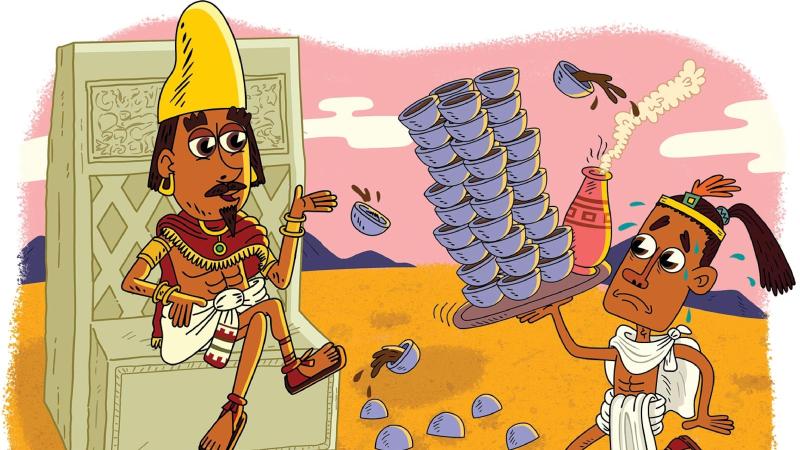The secret history of chocolate
By: Jamie Kiffel-Alcheh, Illustrations byJoe Rocco (National Geographic Kids)
A brief telling of a long history.

Deep in the South American rainforest is … a chocolate tree? One-foot-long bright yellow pods hang from its branches. Inside are small, bitter seeds that give the tree its name: cacao (cuh-COW). Those seeds are what we use to make chocolate.
The seeds—which grow only near the Equator—don’t look or taste delicious. But ancient people figured out how to use them to make tasty treats. (In fact, the first part of the seed’s scientific name, Theobroma cacao, translates to "food of the gods" in Greek.) Check out the timeline below for the sweet scoop on the history of chocolate.
( Historians don’t always know the exact dates of historical events. That’s why you’ll see a "ca" next to some of the years on these pages. It stands for "circa," meaning "around.")
3300 B.C.

The earliest people known to have used the cacao plant are the ancient Mayo-Chinchipe people of what’s now Ecuador, a country in South America. Experts aren’t sure whether these people used the plant for food, drink, or medicine. But they do know the culture used cacao often since they found traces of theobromine—a natural chemical compound that comes from the plant—in artifacts found in archaeological sites throughout the region.
ca 1800 B.C.
The ancient Olmec people of Mesoamerica (what’s now Mexico and Central America) begin using cacao seeds—also called cocoa beans—to brew warm, flavored drinks. Historians aren’t sure how the Olmec figured out that the plant’s bitter beans would make tasty beverages. But one guess is that when they ate the fruit surrounding the seeds, they’d spit the seeds into a fire, which gave off a pleasing smell.
ca 8TH CENTURY A.D.

Cha-ching! The Maya, another group of ancient people from Mesoamerica, start using cocoa beans as money. Archaeologists have even found counterfeit beans made of clay that people tried to pass off as the real deal.
1500s

1600s-1700s

Chocolate houses—similar to coffeehouses today—become popular gathering spots for rich Europeans and Americans to meet over a hot chocolate drink. During the Revolutionary War, which lasts from 1775 to 1783, wounded soldiers sip the beverage to warm them up and give them an energy boost; troops are sometimes even paid with cocoa beans. In 1785, Thomas Jefferson predicts that hot chocolate will become as popular as tea or coffee.
1847
A company called J.S. Fry and Sons of England adds extra cacao butter to liquid chocolate, turning it solid and creating the first mass-produced chocolate bars. Over the next several decades, chocolate makers add milk powder to their recipes to create milk chocolate.
LATE 1800s
Chocolate is still kind of … chewy. So in 1879, Rodolphe Lindt of Switzerland comes up with a process called conching, in which a machine stirs the chocolate until it gets that melt-in-your-mouth texture. Dozens of different brands start making their own chocolate bars with the conching process.
EARLY 1900s

At the beginning of the 20th century, the main ingredient in chocolate—cocoa—becomes much cheaper. Chocolate is no longer a treat for just rich people, and stores around the world are stocked with affordable chocolate bars for everyone.
TODAY
A model shows off her chocolate dress at the 2017 Salon du Chocolat.
PHOTOGRAPH BY LAURENT VITEUR / WIREIMAGE / GETTY IMAGES






Wish all history tasted this good.